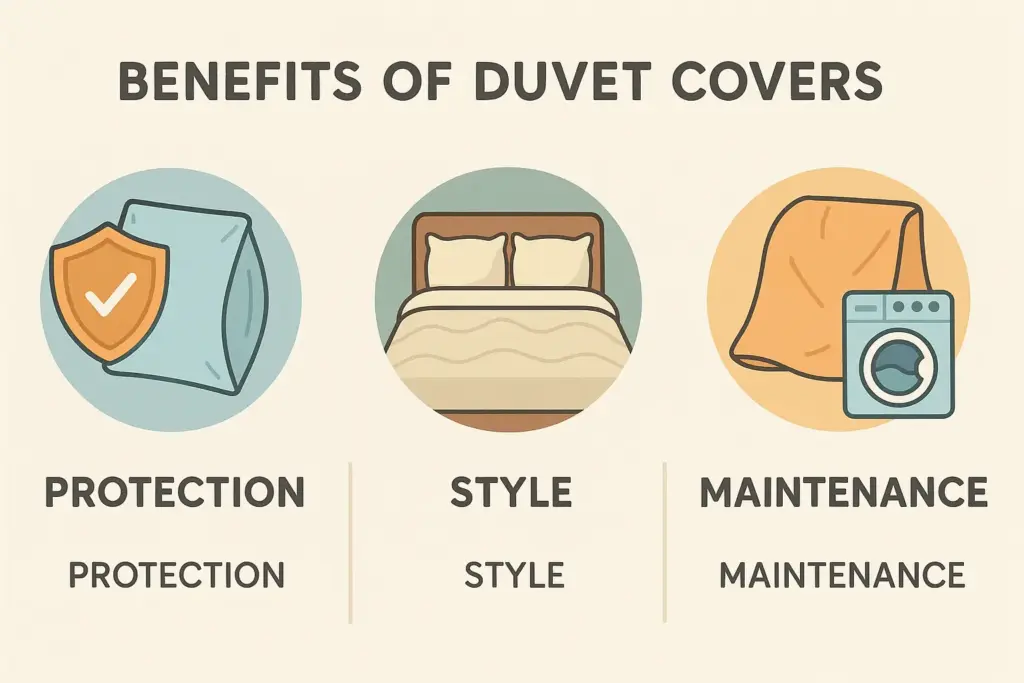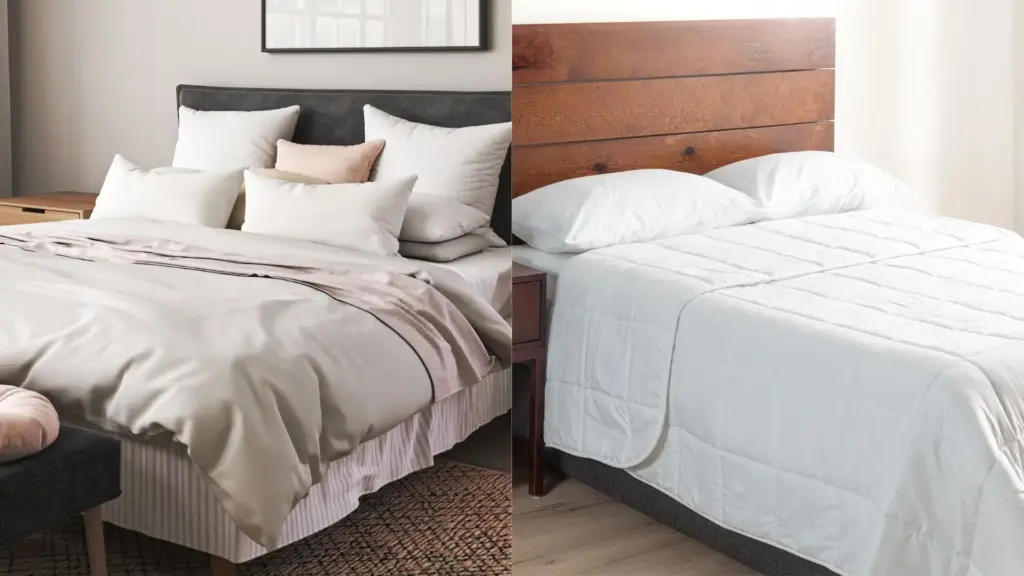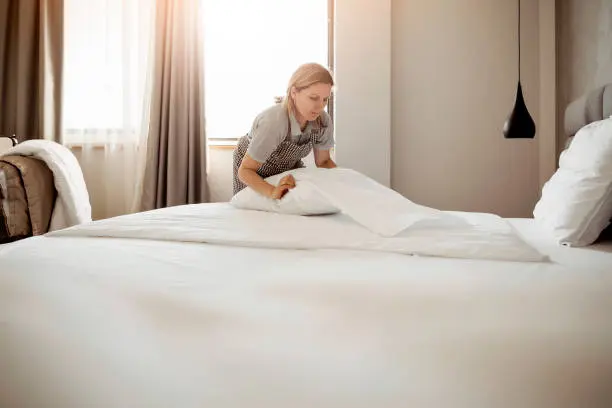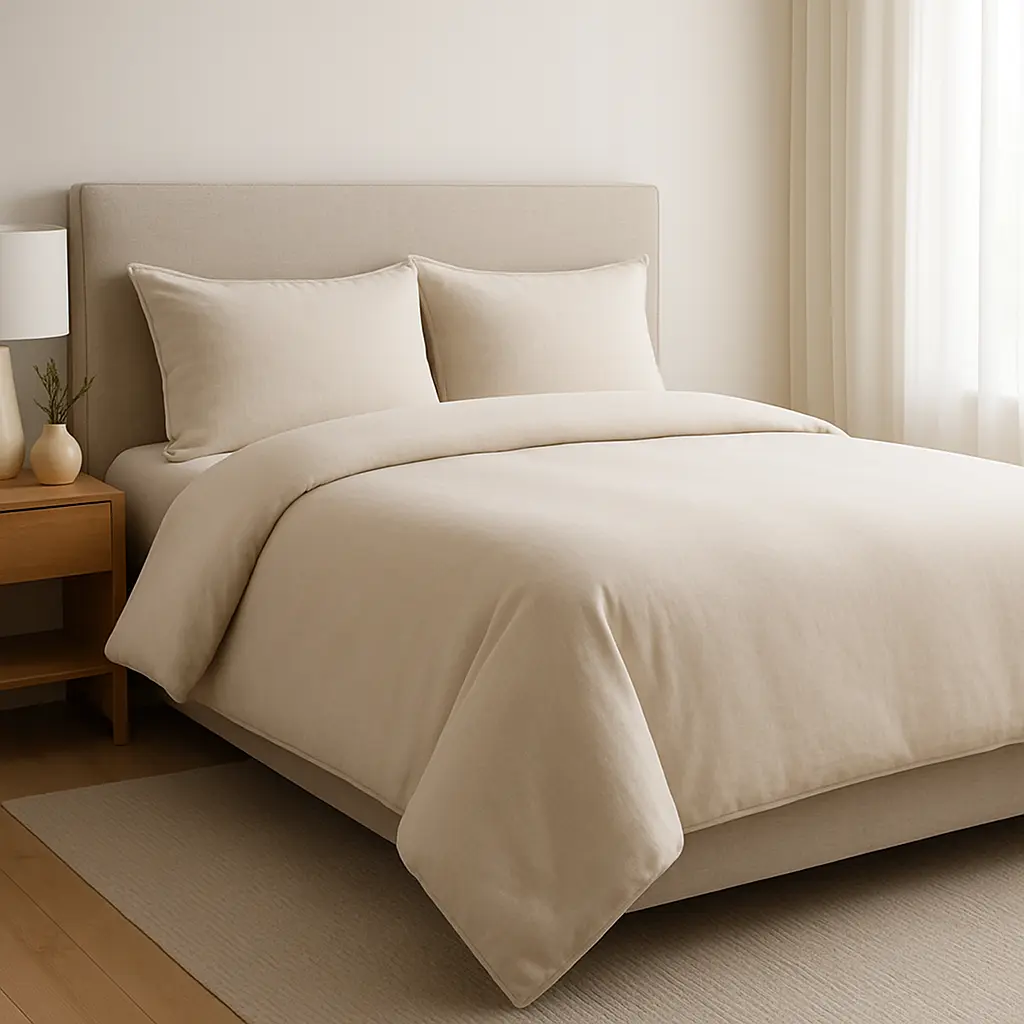In the world of bedding, the duvet cover is often underestimated. Yet this single textile layer plays a pivotal role in both aesthetics and performance. Whether you’re curating a luxury hotel suite, supplying retail collections, or managing institutional linen, understanding duvet covers is essential to delivering superior sleep experiences.
What Exactly Is a Duvet Cover?
A duvet cover is a removable protective layer that encases a duvet insert (also known as a comforter). Think of it like a pillowcase for a pillow — but for your bed’s most central component. It typically features a zipper, button, or tie closure to keep the duvet in place, and it’s designed for easy removal and cleaning.
Key Functions of a Duvet Cover
1. Protection & Hygiene
- Shields the inner duvet from dust, body oils, and spills
- Extends the life of the duvet insert, especially for down-filled or high-end models
- Reduces the need for frequent washing of the bulky insert
2. Aesthetic Versatility
- Enables style rotation without replacing the duvet
- Offers seasonal or thematic updates: from crisp hotel whites to rich, textured linens
- Custom embroidery, piping, or branding possible for B2B personalization
3. Ease of Maintenance
- Most duvet covers are machine washable, unlike many inserts
- Suitable for commercial laundering environments (hospitality, healthcare, etc.)
- Faster drying, smaller storage footprint

Duvet Cover vs Comforter: What’s the Difference?
| Feature | Duvet + Cover | Comforter (Standalone) |
|---|---|---|
| Structure | Insert + removable outer cover | All-in-one stitched unit |
| Maintenance | Wash cover only | Wash entire unit (less often) |
| Design Flexibility | High — change covers as desired | Low — fixed appearance |
| B2B Utility | Ideal for custom branding, hygiene | Cost-efficient but less flexible |

Materials Matter: Popular Fabric Options
| Material | Benefits | Ideal Use Case |
|---|---|---|
| Cotton | Breathable, durable, hypoallergenic | All-season use, hotels, home textiles |
| Linen | Cool, moisture-wicking, textured look | Summer bedding, luxury brands |
| Tencel™ | Soft, sustainable, temperature-regulating | Eco-conscious collections |
| Poly-Cotton | Wrinkle-resistant, cost-effective | Institutional, entry-level retail |
| Silk or Satin | Luxurious, elegant, smooth texture | Boutique hotels, premium gifts |
Construction Features That Matter
When evaluating or sourcing duvet covers, construction quality is key. Look for:
- High thread count (200–400 for cotton is ideal)
- Corner ties or loops to anchor insert and prevent bunching
- Double-stitched seams for durability
- Hidden closure systems for a clean look
B2B Buyers: Why Duvet Covers Are a Strategic Choice
For businesses in hospitality, retail, and healthcare, duvet covers offer:
- Cost control: Replace only the outer layer, not the insert
- Branding opportunities: Custom colors, embroidery, logo placement
- Logistical ease: Lower laundering costs, efficient housekeeping workflows
- Sustainability compliance: Reuse inserts, reduce textile waste

Sizing Standards: What You Need to Know
Duvet covers come in region-specific size standards, which must match inserts accurately:
| Region | Twin | Full/Double | Queen | King |
|---|---|---|---|---|
| US | 66×86 in | 80×90 in | 90×92 in | 104×90 in |
| EU | 135×200 cm | 200×200 cm | 240×220 cm | 260×240 cm |
| UK | 135×200 cm | 200×200 cm | 225×220 cm | 260×220 cm |
Always align product specs to local market expectations.
Conclusion: A Small Product with a Big Impact
From a functional and business perspective, the duvet cover is more than decorative. It is a versatile, hygienic, and strategic component of any bedding solution. For bedding manufacturers, retailers, and hoteliers, understanding duvet covers means unlocking better customer satisfaction, higher margins, and stronger brand identity.


Leave a Reply